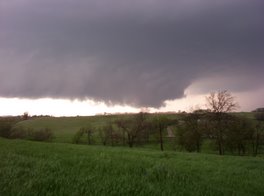Well, I've had some comments already on the name. Funny how not everybody "gets it" right away when you're so pleased with how clever your thinking is. Hell, I haven't seen that many confused faces since I tried explaining the Internet to Omaha's Fortune 500 back in 1993.
What Fuzzy Numbers really drives at is the realization that numbers indeed go somewhat fuzzy when we humans deal with them, and in a sense, they need to. Seeking endless precision may be useful in memorizing pi to 100,000 decimal places but other than that, it's at best a distraction and more possibly an indication of some serious issues with one's self-confidence.
Consider an experience I had more than fifteen years ago, as I started out my career as a lowly cost analyst for a smaller long distance company in Omaha. An early assignment thrown my way was to calculate the total damage caused by an international calling card fraud episode our company encountered. Back in the early 90s, this involved getting data off of switch tapes and either crunching it in Lotus 1-2-3 or the bootleg version of Excel I snuck in on Windows. I spent nearly a week crunching data, calculating rate tables based on least-cost routing terminations for tens of thousands of rather difficult to cost international minutes. At the conclusion, I came up with a precise $155,210.18 +/- $1.00. Steve M., my boss at the time, seemed more amused than impressed, especially at the level of accuracy. After he could no longer conceal the laughter, he explained that an estimate with +/- 25% would have been sufficient, I was horrified (that estimate would have probably taken no more than a few hours to work up).
Fortunately or not, I've had a few related experiences since then. Having moved into carrier network operations and engineering, a surragate for a more quantitative field (more on that at a later date), the desire for exceptional precision has continued to be a real factor. I've been fortunate to have several wise mentors who reminded me that the data really is only the beginning of the puzzle. Precision, in that respect, is only appropriate to the degree that it is required to reduce the error out enough from the model to make some sort of sense out of things. Hence... fuzzy numbers.
I think David Maister and Geoff Considine really summed it up in their article called "An Entrepreneurial Journey where they talk about the most important idea Geoff gained from reading "Managing the Professional Services Firm" is this:
“You are there to help, not to be right.” This single ‘Maisterism’ is one of the core ideas that Geoff repeats often to himself and when discussing professional services with others. People hire consultants because they want help with some issue. You don’t need to prove that you are smart — that is determined when they hire you.
Think about that one, especially if you find yourself defining the quality of your work to clients on the accuracy, precision and "rightness" of your designs. Geoff and David's realization has immensely helped me in my risk management work with client banks. Often for your client, fuzzy to you is the answer they need to address their problems, and that's what counts.
Tuesday, October 10, 2006
Subscribe to:
Post Comments (Atom)

No comments:
Post a Comment